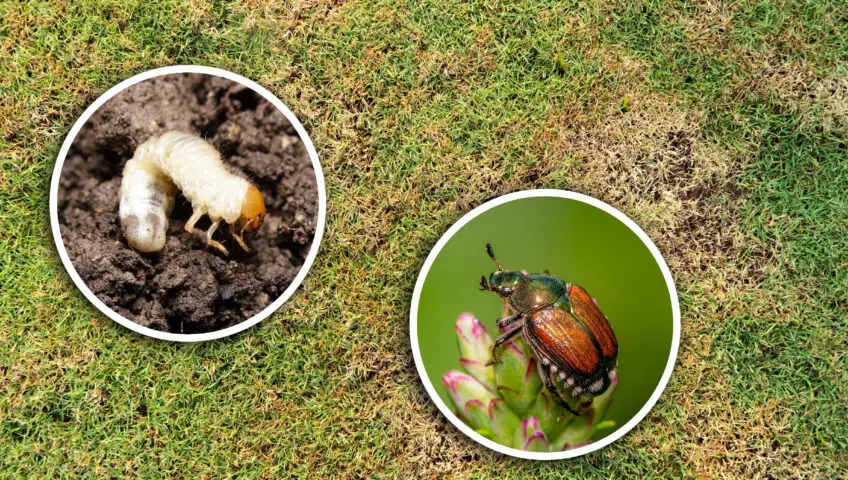Turf-damaging insects are a problem most homeowners face at some point. These pests feed on the roots and leaves of grass, weakening the lawn, causing significant damage. But by familiarizing yourself with the most common lawn pests, and learning how to combat them, you can save your sod and keep your lawn lush and beautiful.
The three most prevalent pests feasting on Florida foliage are grubs, chinch bugs and sod webworms.
Grubs
Grubs are the larvae of beetles of various species, including Japanese beetles, May/June beetles, scarabs and chafers. Grubs are typically white, C-shaped larvae. They feed on the roots of turfgrass. As a result, it weakens, becoming thin and yellowed. Grubs also attract raccoons, armadillos and birds, all of which make an already damaged area look much worse.
Chinch bugs
Chinch bugs live in thatch, the layer of matter that develops between your lawn and the soil. These pests suck fluids from the grass with their needle-like mouthparts. Chinch bugs have black bodies with white wings. You may notice them more in the hot, dry areas of your lawn. And by feeding in groups, chinch bugs can quickly destroy an entire lawn.
Sod webworms
Sod webworms are the larvae of lawn moths and can be identified by their green or brown color and the silk webbing they produce. These pests especially prefer newly established turf, so be on the lookout if you’ve recently laid sod. The first sign of sod webworm damage is the varying height of the grass blades where the larvae are feeding. The larvae, which mature into brown moths, are cream-colored caterpillars with brown spots.
To get rid of the lawn-munching pests listed above, call on the experts at Slug-A-Bug to get the job done right.
At Slug-A-Bug, we understand that you want a green, thick, healthy lawn; so that’s exactly what we work to provide. Call us today at (321) 259-7844 to discover what thousands of satisfied Slug-A-Bug customers have already experienced: a beautiful lawn free of insects and weeds. We will service your lawn every two months to keep damaging insects under control. We will get it right (with your cooperation) or we will return between service visits at no additional charge.
For more information:
https://www.britannica.com/topic/turf
https://edis.ifas.ufl.edu/entity/topic/white_grubs
https://edis.ifas.ufl.edu/entity/topic/southern_chinch_bug
https://gardeningsolutions.ifas.ufl.edu/lawns/problems-and-solutions/thatch.html
